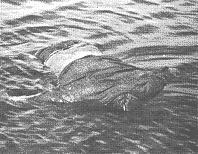
|
GENOCIDE
in CROATIA
|
ETHNIC CLEANSING IN VUKOVAR
The plan on ethnic cleansing of Vukovar municipality from Serbs was adopted on March 15 1991 at the meeting of leading Croatian Democratic Union representatives on the premises of the local community "Alojzije Stepinac" in Borovo Naselje.
The atmosphere of fear in 1991 was based on local circumstances, and it was one of the causes of mass fleeing of Serb population from Vukovar. That atmosphere in Vukovar was created by Tomislav Mercep and his associates, through violent and repressive measures against the Vukovar population, mainly Serbs. Some of violent and repressive measures included: unauthorized entry of private homes, home robberies, expropriation of private vehicles, forced arrests for interrogation and liquidation's (executions) of some Vukovar inhabitants.
Fear was additionally provoked by well-organized harassment of Serbs through night telephone calls and death threats if the person fails to leave Vukovar in due time. Many witnesses claimed that they received such threats from late 1990 until mid-1991. It frequently happened that anonymous callers, allegedly benevolently, warned the called Serbs that their name was on a list for liquidation. Such threats, due to great inter-ethnic tensions, were usually understood seriously and were the reason for many Serbs to go into exile. Ignoring threats was not a smart move. Thus, for example, Ljuban Vucinic, a Serb from Borovo Naselje, remained in his house in spite of a warning that he was on the Croatian list for liquidation's, but on 22 July 1991,only a few days after the warning, he was arrested, killed and thrown into the Danube.

Danube - the mass grave of executed Serbs
During the inter-ethnic war in the Republic of Croatia 1991-1996 Croatian armed forces liquidated more than ten thousand Serbs. In doing so, they tried, and in most cases succeeded, to remove and conceal their bodies. The most frequent practices for disposing of bodies included burying of victims in unmarked graves, incineration of bodies or throwing into fish ponds or rivers. The Croatian authorities approached this task methodically not only to cover up the traces of crimes committed by their military formations from the international public, but because they were determined, as Pilip Karaula, commander of the ZNG 3rd battalion, 204th brigade stationed in Vukovar, witnessed, to prevent the Serbs from marking again the places of mass executions and erect monuments, as they did on the locations of World War II Ustashi crimes.